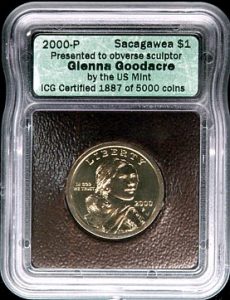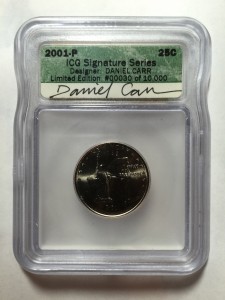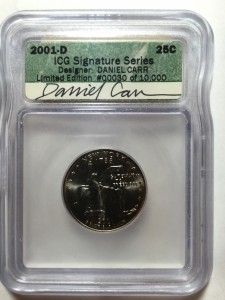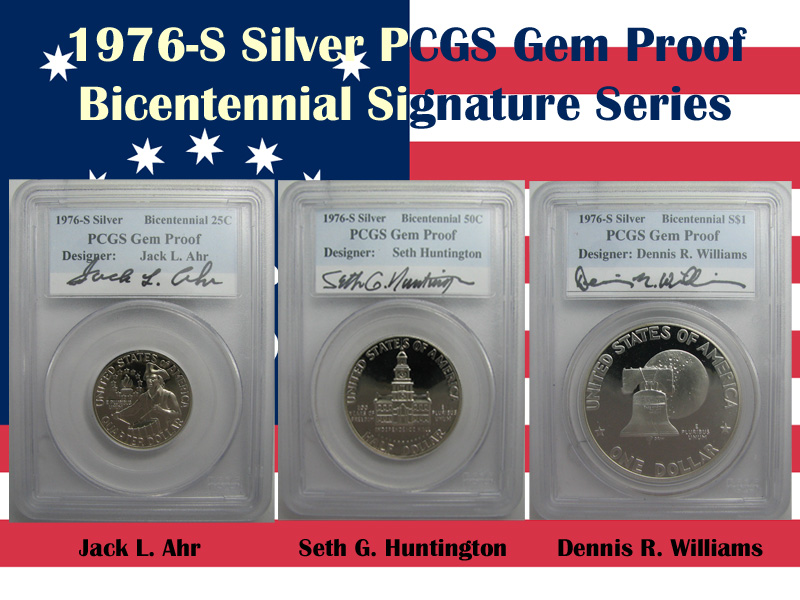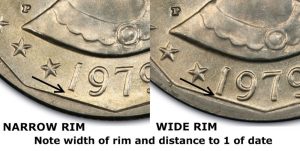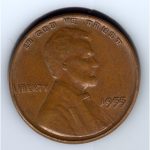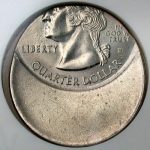Weekly World Numismatic News for July 25, 2021
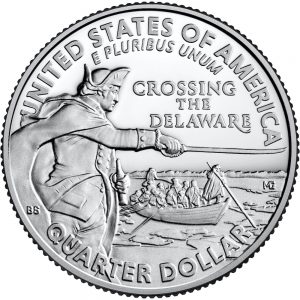 According to reports, there continues to be a coin shortage. In areas of the country where the people primarily use cash, retailers tell news outlets that they are receiving fractions of their orders from the banks. The banks are countering that they are not receiving their complete orders from the Federal Reserve.
According to reports, there continues to be a coin shortage. In areas of the country where the people primarily use cash, retailers tell news outlets that they are receiving fractions of their orders from the banks. The banks are countering that they are not receiving their complete orders from the Federal Reserve.
The Federal Reserve Banks have not commented on the problem, but the U.S. Coin Task Force continues their Get Coins Moving promotion. When speaking on background, sources say that there are coins in the Fed’s cash rooms but that the amount they keep in reserve for emergencies is lower than usual. Some report that there is an overabundance of dollar coins if someone wants them.
While other areas of the country are experiencing coin shortages, the D.C. area does not seem to have problems. The only advertising for the Get Coins Moving program is on national telecasts. Very few businesses have signs asking for customers to spend their coins.
To see what I can find in change, I have been paying with cash for local transactions. When traveling away from home, I will use cash to test the diversity of the change I receive. While doing this in the last three months, there is a lack of diversity in the change I receive.
Even though the U.S. Mint produced more coins than it had in its history in 2020, the change I receive is full of 2019 coins and older 50 State Quarters. Over the weekend, my change had six Ohio state quarters complete with the hanging astronaut.
We are getting close to the end of July, and I have not seen a 2021 coin, including the Washington Crossing the Delaware quarter.
There is money out there. People have to spend it for it to circulate. Please spend your pocket change so I can find something interesting.
And now the news…
 → Read more at businessinsider.co.za
→ Read more at businessinsider.co.za
 → Read more at dailymail.co.uk
→ Read more at dailymail.co.uk
 → Read more at kitco.com
→ Read more at kitco.com
 → Read more at thefirstnews.com
→ Read more at thefirstnews.com
 → Read more at ekathimerini.com
→ Read more at ekathimerini.com
 → Read more at heritagedaily.com
→ Read more at heritagedaily.com
Weekly Numismatic World News
 Depending on how you look at the news, it was a quiet week in numismatics from around the world. One issue not being written about in the numismatic press are the ongoing problems local governments and some businesses are facing in the United Kingdom on their switch to the new pound coin. Aside from production issues, there are entities that are not ready for the new pound coin and may not be ready when the old round pound is demonetized in October.
Depending on how you look at the news, it was a quiet week in numismatics from around the world. One issue not being written about in the numismatic press are the ongoing problems local governments and some businesses are facing in the United Kingdom on their switch to the new pound coin. Aside from production issues, there are entities that are not ready for the new pound coin and may not be ready when the old round pound is demonetized in October.
The United Kingdom is a smaller country than the United States with fewer people and not as many smaller governments trying to control their own piece of grass. Yet, the change was announced almost three years in advance and the Royal Mint provided free test coins to anyone who asked and they are still not ready. One can only imagine the chaos that would occur in the United States if the same thing happened here!
The other big story that I am not including is those about Bitcoin and other so-called crypto-currencies. There are a lot of stories about “Initial Coin Offerings” (ICO) announcing another version of these contrived bit-created† trading units. Unless crypto-currencies produce something numismatic-related that can be collected, it is the same as someone writing “This paper is worth $1” and using it for commerce. Without backing, both the crypto-currency and the paper are worth whatever someone will trade for it. Neither have real value and not a subject I plan to cover.
Now, time for the news!
NEW ORLEANS – A local artist is drawing interest for a commemorative coin memorializing four Confederate-era monuments recently removed by the City of New Orleans. One Point Five Art, an artist based in Algiers who sells New Orleans-themed artwork on platforms such as Facebook, Ebay, and Etsy, has listed the “Monumental” New Orleans Commemorative Confederate Statue Coin for presale on Ebay. → Read more at wgno.com
INDIAN RIVER COUNTY — The seas have not been kind this summer to treasure hunters looking for gold off the coast of Wabasso. So far, the crew of the Capitana has recovered only one gold coin, an Escudo minted in Mexico about 1714. → Read more at tcpalm.com
CARSON CITY, Nev. – In February of 1870, the sparkling new steam-powered coin press inside the United States Mint in Carson City struck its first coin, a Seated Liberty silver dollar with a crisp CC mint mark. → Read more at carsonvalleytimes.com
Experts were thrilled to discover the coin on a remote island in the Scottish Orkney archipelago. The coin, which is believed to date from the mid fourth-century A.D., was found during an excavation on the small island of Rousay, which is part of the Orkney islands off Scotland’s northeastern coast. → Read more at foxnews.com
AN ancient Roman coin dating back around 1600 years has been discovered in Rousay, Orkney . Archaeologists unearthed the ancient copper alloy coin during a dig by teams working at the eroding beach at Swandro. → Read more at scotsman.com
A rare gold coin from the time of the Byzantine Emperor Phocas was discovered during excavations at Rusokastro Fortress, which is located on a hill near Zhelyazovo village, in Burgas district in southeastern Bulgaria, quoted by the Bulgarian National Television. → Read more at novinite.com
MANILA- The Bangko Sentral ng Pilipinas (BSP) is looking to launch redesigned coins with new security features before the end of the year. Central bank Deputy Governor Diwa Guinigundo said Friday that the new generation coins would be released and circulated within the year. → Read more at news.abs-cbn.com
DENVER — The World’s Fair of Money® is coming to Denver, Colorado, August 1 – 5, 2017, and the public can see more than $1 billion of historic rare coins and colorful currency including $100,000 denomination bills, Colorado Gold Rush-era coins, a famous $3 million nickel and currency that was mistakenly misprinted with upside down serial numbers. → Read more at northdenvertribune.com
Autographed Slabs and other numismentos
I do not believe there should be a problem with this.
Previously, I wrote about something I called “numismentos,” mementos created from numismatic items. It was prompted when NGC announced they struck a deal with Edmund C. Moy, the 38th Director of the U.S. Mint and currently the last full-time director, to autograph labels. I also noted that NGC also had autograph deals with Elizabeth Jones and John Mercanti, the 11th and 12th Cheif Engravers of the U.S. Mint, respectively.
You can see the list of available NGC Signature Labels here.
But NGC is not the only one in this game. Professional Coin Grading Service has had similar promotions including Philip Diehl, another former Director of the U.S. Mint and a long list of Baseball Hall of Fame inductees who signed labels used in the encapsulation of the 2014 National Baseball Hall of Fame commemorative coins.
Famously, Glenna Goodacre, who was paid $5,000 for her design of the Sacagawea dollar, asked to be paid in the new dollar coin. She sent the coins to Independent Coin Graders to be encapsulated with special labels. Goodacre then sold the coins at a premium. She did not sell out of these coins. Later, about 2,000 coins were acquired by Jeff Garrett who submitted them to PCGS. The coins were encapsulated with a special attribution on the PCGS label and included an insert with an autographed by Philip Diehl.ICG also had some of the designers of the State Quarters autograph labels.
Does anyone else remember when the original PCI was still in business and they hired J.T. Stanton as company president and they had him autograph labels of coins he graded?
Although all of the grading services include special attribution for coins, NGC and PCGS have special labels that they use for certain coins.
In all cases, these grading services are creating these numismentos for customers interested in having the label be significant to their collection.
The only problem I have with the label designation is the “First Strike” or “First Strike” labels. There are questions as to the validity of these designations that causes an unnecessary premium to be added to these coins.
Besides, If I took any other stance, I could be accused of hypocrisy. In a few cases, I have purchased numismentos. My collection includes a pair of ICG holders with 2001-P and 2001-D New York State quarters autographed by designer David Carr that is part of my New York collection.
- 2000-P New York quarter with Daniel Carr’s autograph on ICG label
- 2000-D New York quarter with Daniel Carr’s autograph on ICG label
As part of my Bicentennial Collections, I own a Bicentennial PCGS Signature set. The set consists of the three proof coins with the special bicentennial reverse in PCGS slabs with the autographs of Jack L. Ahr, Seth Huntington, and Dennis R. Williams, the designer of the coins. There is a business strike version of this set but I find the proof coins more appealing.
The only reason that there appears to be some umbrage taken with the autograph by Rick Harrison is that he is a relentless self-promoter whose style is not welcome by everyone. Harrison is not the first non-numismatic-related celebrity to autograph inserts but may be the most controversial to some people.
As I have previously suggested, we can call these types of numismatic-related collectibles numismentos. Numismento is a portmanteau of numismatic + memento.
I suggest the name to distinguish collecting the coins from collecting the slabs, show-related ephemera, buttons, or anything else that is not numismatics.
If collecting numismentos makes you happy? Enjoy yourself!
Numismatic World News for the Week Ending July 15, 2017
I have lamented the ending of the weekly newsletter. I thought it would be fun to share the numismatic-related news from non-numismatic press from around the interwebs and grow into something interesting. To support generating the newsletter, I wrote some software to automate the process. These scripts are pretty cool if you ask me (I know you didn’t but I did). It is not fun letting good software go to waste. So I reworked the output to generate a version for the blog.
Each week, I will take no more than 10 stories from around the world and post them Sunday evening. These stories range from those about coin production, finds of ancient hoards, coin and currency issues from world government, bullion, and anything else that would concern the numismatic market in some way.
ENJOY!
It's time to start checking your pockets again, as a rare pound coin with a manufacturing fault has been valued at £3,000. A coin collector from Hull spotted the error on his new £1 coin and immediately contacted the Royal Mint to find out if it was a genuine coin which could therefore be extremely rare and sought-after. → Read more at cosmopolitan.com
Summary Silver fundamentals released by the Silver Institute for 2016 show reduced demand, with a smaller deficit compared to 2015 Silver is reacting to investment news such as interest rate rises, and has since the second half of 2016 → Read more at seekingalpha.com
The Prince of Wales has struck a commemorative coin to mark the Duke of Edinburgh's retirement from public duties. One side of the £1 coin bears the image of Prince Philip and the phrase "Non sibi sed patriae", meaning "not for self, but country". → Read more at bbc.com
BERLIN — A giant gold coin that was stolen from a museum in the heart of Berlin this year was probably smashed or melted down and will most likely never be recovered, the authorities said on Wednesday, as they announced four arrests, including that of a museum security guard. → Read more at nytimes.com
A Beaumont man is facing up to 20 years in federal prison for an alleged scheme involving $5.4 million in rare coins. Westley Pollard Jr., 42, was arrested Wednesday morning and charged with 11 counts of mail fraud, according to a statement from the U.S. → Read more at beaumontenterprise.com
DEFECTIVE quids — previously dubbed the “most secure in the world†— have been slowly cropping up online with many selling for hundreds of pounds. But are these errors really that common and why do they make your coins collectable? → Read more at thesun.co.uk
Governor of the Bank of Jamaica (BoJ) Brian Wynter says a shortage of coins will ease later this month. He told Parliament's Economy and Productions Committee Wednesday that there is currently a shortage of $20 coins. → Read more at jamaica-gleaner.com
HOW much is a dollar worth? If it falls between the car seat cushions, or it gets lost in the washing machine, it’s worth big bucks to Ronnie Shahar. Every year, countries all over the world ship millions of tonnes of scrap metal to processing plants in China, India and South-East Asia, the remains of old cars, vehicles, washing machines and vending machines. → Read more at news.com.au
Indian Prime Minister Narendra Modi commemorated the birthday of Shrimad Rajchandra — the spiritual guide of Mahatma Gandhi — by launching two commemorative coins of Rs. 150 and Rs. 10 on June 29 at the Sabarmati Ashram in Ahmedabad. → Read more at indiawest.com
Errors verus Varieties: Varieties are spice
- Errors versus Varieties: About Errors
- Errors verus Varieties: Varieties are spice ← you are here
A variety is a coin that differs from its basic design type in some distinctive way and is thus differentiated by collectors. Varieties are not errors. They are deliberate changes to the design whether it is to better define the design, adjust the design to strike better, or to add or change elements like dates and mintmarks.
A key difference between a variety and an error is that varieties are replicated for multiple strikes. Die changes, repunched mintmarks, repunched dates and over polishing of dies can reproduce the variety for the life of the die or until it is detected by Mint workers.
Nearly every series of coins has its own traceable die varieties that have been studied and catalogued by researchers. Researchers assign the varieties a number that is used by the third-party grading services to provide attribution to the variety on their holder.
- Bicentennial Dollar Type 1 (1975) Reverse
- Bicentennial Dollar Type 2 (1976) Reverse
- 1979 Susan B Anthony Varieties
Variety collecting is a very specialized subject. If you are going to collect varieties, you should read the references to understand the characteristics of the varieties. Some of the more well recognized and documented varieties include:
| Catalog | Coin Series | Main or Initial Reference |
|---|---|---|
| Cohen (C#) | Half Cents (1793-1857) | American Half Cents – The “Little Half Sisters” by Roger S. Cohen, Jr. |
| Sheldon (S#) | Large Cents (1793-1814) | Penny Whimsy by Dr. William H. Sheldon |
| Fortin (F#) | Liberty Seated Dimes (1837-1891) | Liberty Seated Dimes – Die Varieties, 1837 – 1891, by Gerry Fortin |
| Overton (O#) | Half Dollars (1794-1836) | Early half dollar die varieties, 1794-1836, by Al C. Overton and Donald L. Parsley |
| Van Allen-Mallis (VAM#) | Morgan and Peace Dollars (1878-1935) | Comprehensive Catalog and Encyclopedia of Morgan & Peace Dollars, by Leroy Van Allen and A. George Mallis |
| Fivaz-Stanton (FS#) | Varieties from the Cherrypickers’ Guide | Cherrypickers’ Guide to Rare Die Varieties of United States Coins, by Bill Fivaz and J.T. Stanton |
Arguably, the most collected series by varieties are Morgan Dollars. VAM varieties and catalog numbers were introduced to the hobby by Leroy Van Allen and A. George Mallis who discovered the varieties while examining Morgan and Peace Dollars. Their book, Comprehensive Catalog and Encyclopedia of Morgan & Peace Dollars began a hunt that has seen hundreds of more varieties found and cataloged.
Most VAM varieties cannot be seen without magnification and detailed knowledge of what to look for. The primary resource for VAM collectors is the VAMworld website. Aside from listing the identified VAM varieties, there are instructions how to identify VAM varieties.
- 1878-P VAM-169 Quadrupled Stars (courtesy of VAMworld)
- 1886-P VAM-1A Line in 6, Slightly Doubled Ear (Image courtesy of VAMworld)
- 1921-S VAM-6A Doubled Stars & Motto & Upper Reverse, Die Scratch (Image courtesy of VAMworld)
The third-party grading services have an optional service that will identify VAM varieties on their holders. However, they do not recognize all VAM varieties. There are three sub-lists of catalogued VAM varieties that are recognized. These varieties are as follows:
- TOP 100: The 100 most significant VAM Varieties known
- HOT 50: A list of additional 50 VAM Varieties that collectors are interested in finding. Many of these varieties are scarce and have sold for significant premiums
- HIT LIST 40: A list of 40 new VAM Varieties that have been discovered since the publishing of the HOT 50 list
General searching for varieties and errors should consider picking up a copy of Cherrypickers’ Guide to Rare Die Varieties of United States Coins by Bill Fivaz and J.T. Stanton. The book comes in two volumes. Volume 1 covers die varieties of half cents through nickel five-cent pieces. Volume 2 covers everything else including gold and bullion issues.
Errors versus Varieties: About Errors
- Errors versus Varieties: About Errors ← you are here
- Errors verus Varieties: Varieties are spice
A basic rule of thumb is that even though errors and varieties represent changes to the basic design of the coin, they differ in how they occur and the resulting appearance of the coin.
A Mint Error is the result of an issue with the manufacturing processes causing the coin to be damaged in some way. Errors can be the result in malfunction of the equipment, imperfect coining materials, or created by human error.
Even though modern equipment is supposed the make the striking process more consistent, when the manufacturing process involves striking billions of coins, there are bound to be a few errors. Coining machines have so many moving parts and everything has to work in concern, one variation in speed, force, vibration, or tilt can make the coins look very different than intended.
Then there is the human factor. Humans are imperfect beings subject to making mistakes. Even though the machines are supposed to help guide the humans to reduce mistakes, something can go wrong, especially in an operation that involves making billions of the product.
To help understand where some of the mint errors come from, they can be categorized as three different types: Planchet Errors, Die Errors, and Strike Errors.
Planchet Errors
Planchet Errors are defects of a coin that was caused by the planchet, the coin blank, being imperfect prior to the coin being struck. Planchet Errors occur prior to striking the coin but in ways that could sometimes not be detected. Types of Planchet Errors include:Die Errors
A Die Error describes a defect caused by a flaw in the dies used to strike the coin. Types of Die Errors include:
The 1937-D Three-Legged Buffalo nickel occurred when a mint worker polished the reverse die of the Buffalo nickel too aggressively without checking his work. The result was the front-right leg of the buffalo being eliminated from the die. A few thousand were created before the Mint officials figured out they had a problem.
Strike Errors
The strike occurs when the top die, usually the obverse, is pushed with such forced on a planchet sitting in a position on the anvil dies, usually the reverse, that will make the impression on the coin. Strike errors are the result of a mechanical problem that occurs during this process.When going to coin shows you can see some of the most fantastic errors. Some boggle the mind how they were done and how they escaped the U.S. Mint. Dealers whose concentration are errors do not reveal their secrets but I have been told that some have contacts with some of the security companies that haul money on behalf of the banks.
This topic is not complete until we talk about varieties. That will be the next post.
- Dime struck on a nail image courtesy of Heritage Auctions.
- 1943 Copper Lincoln cent off-metal error image courtesy of CoinTrackers.
- Off-centered Washington Quarter image courtesy of Coin Collecting Guide for Beginners


